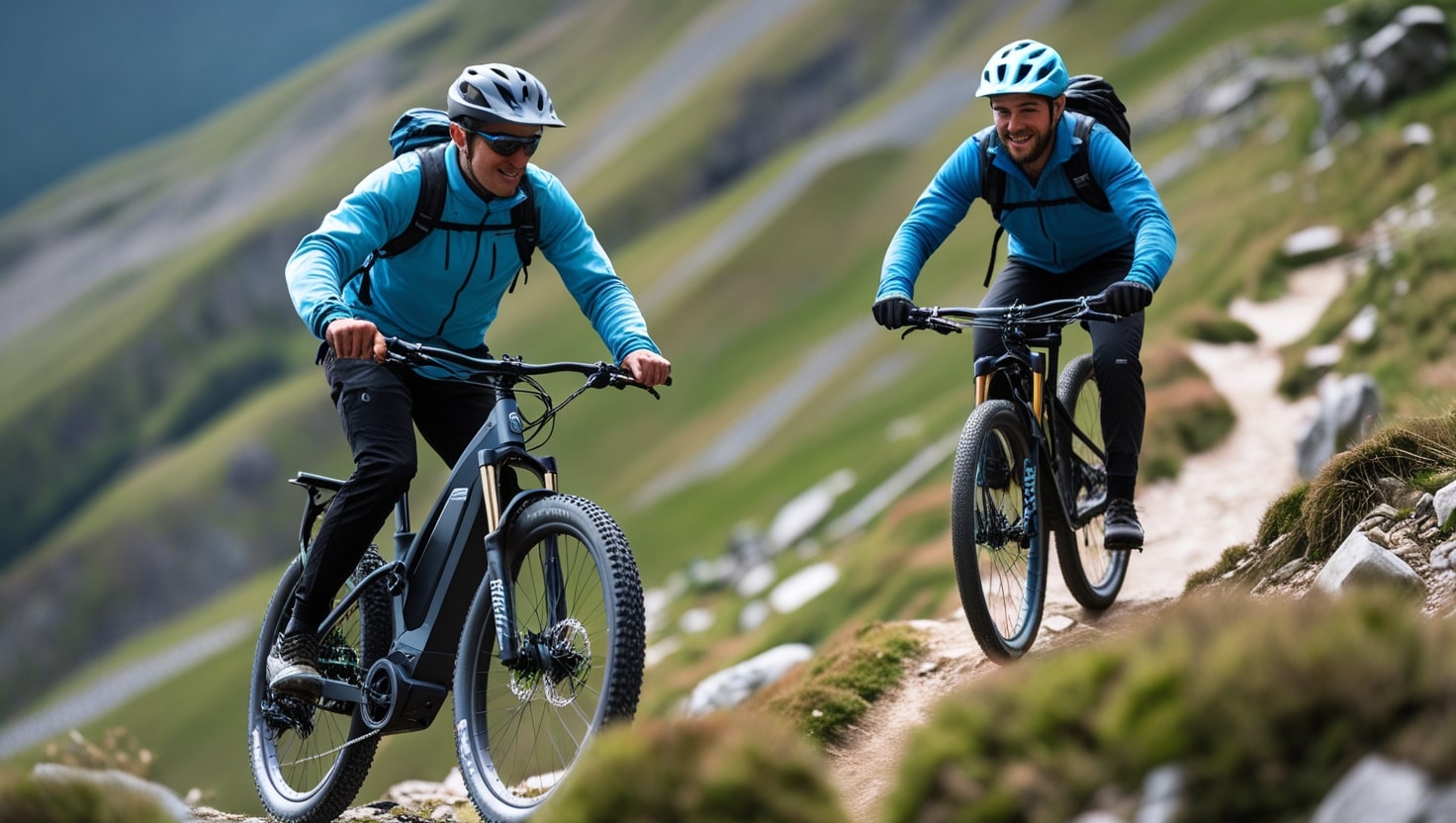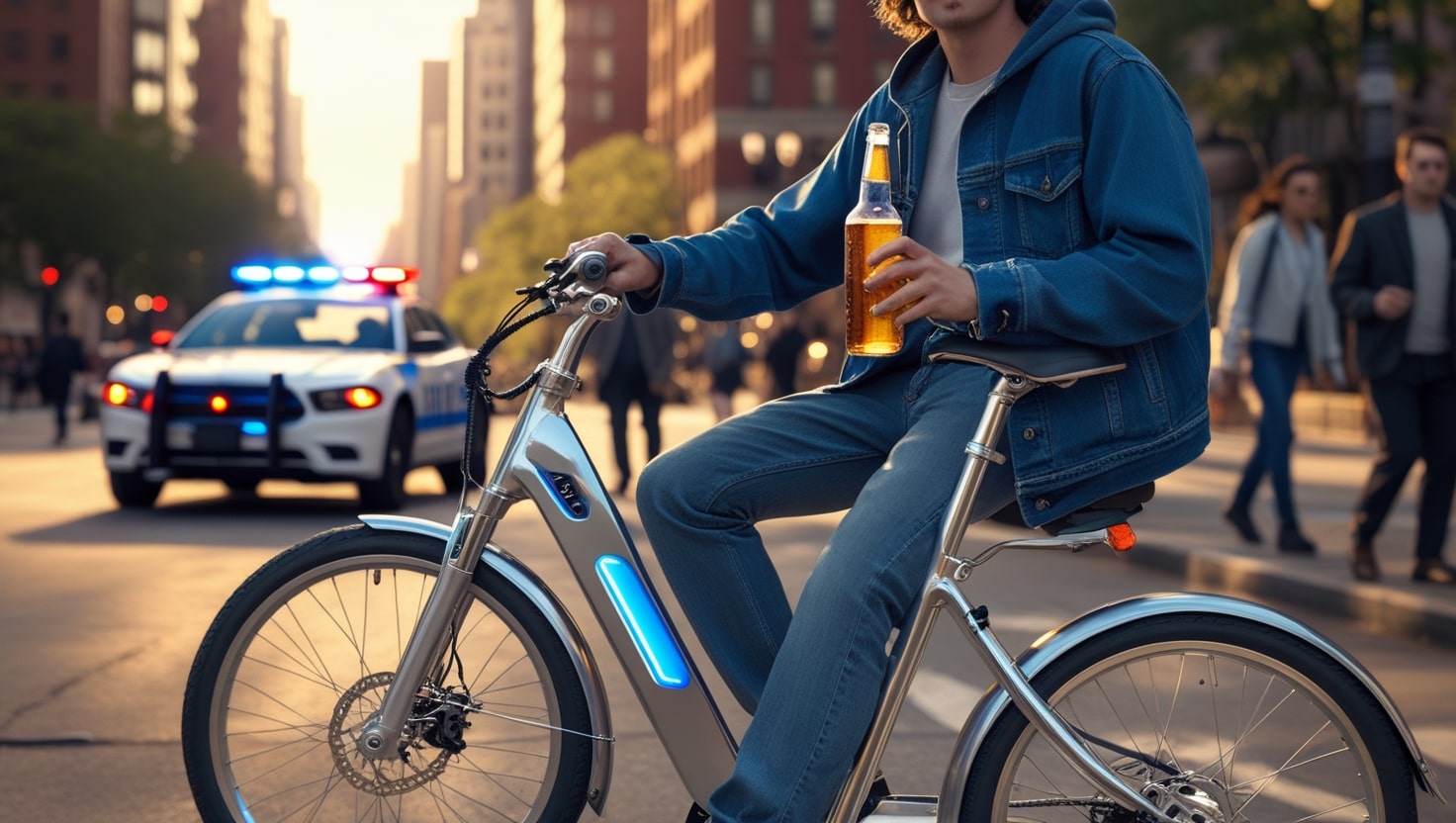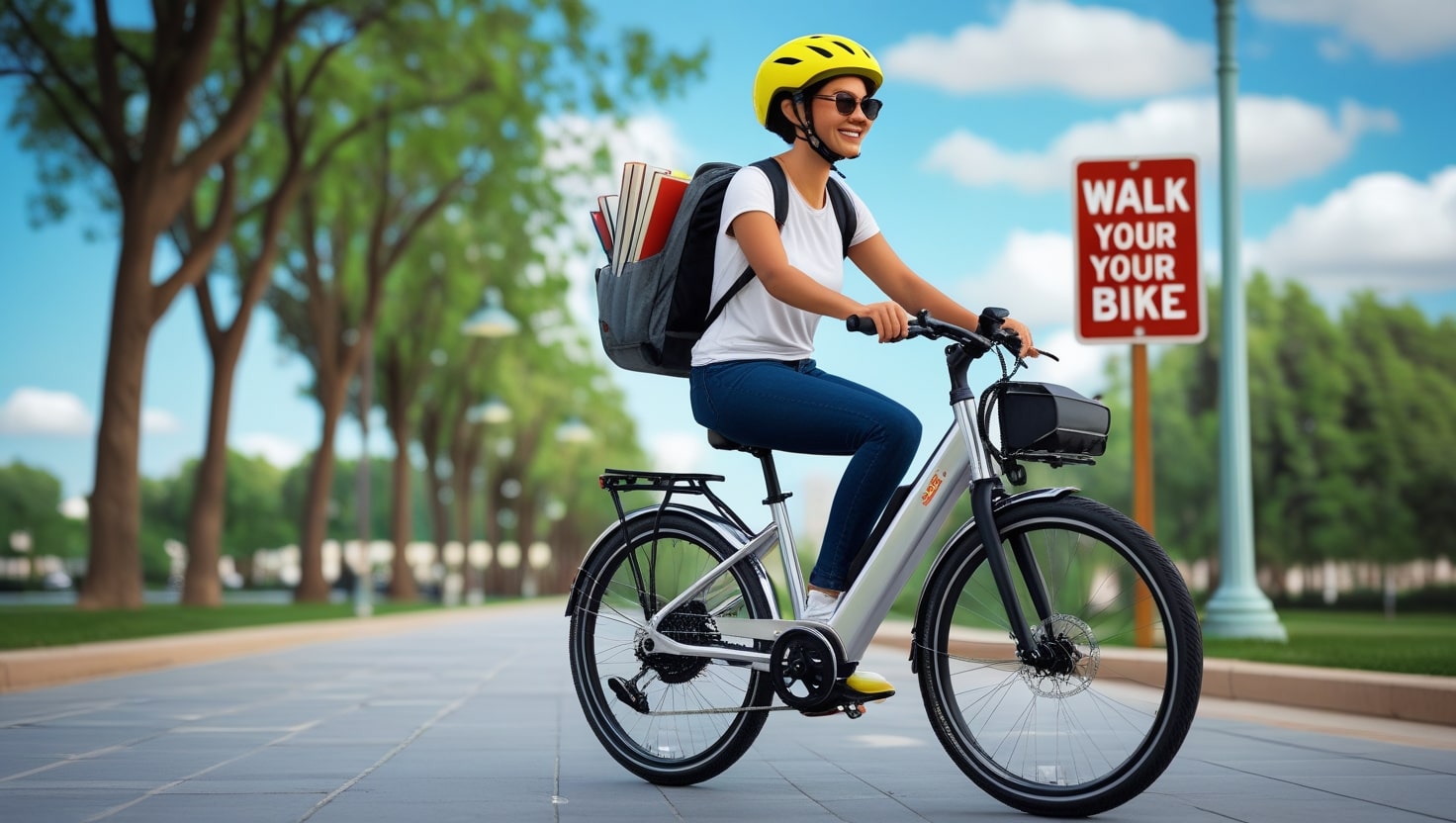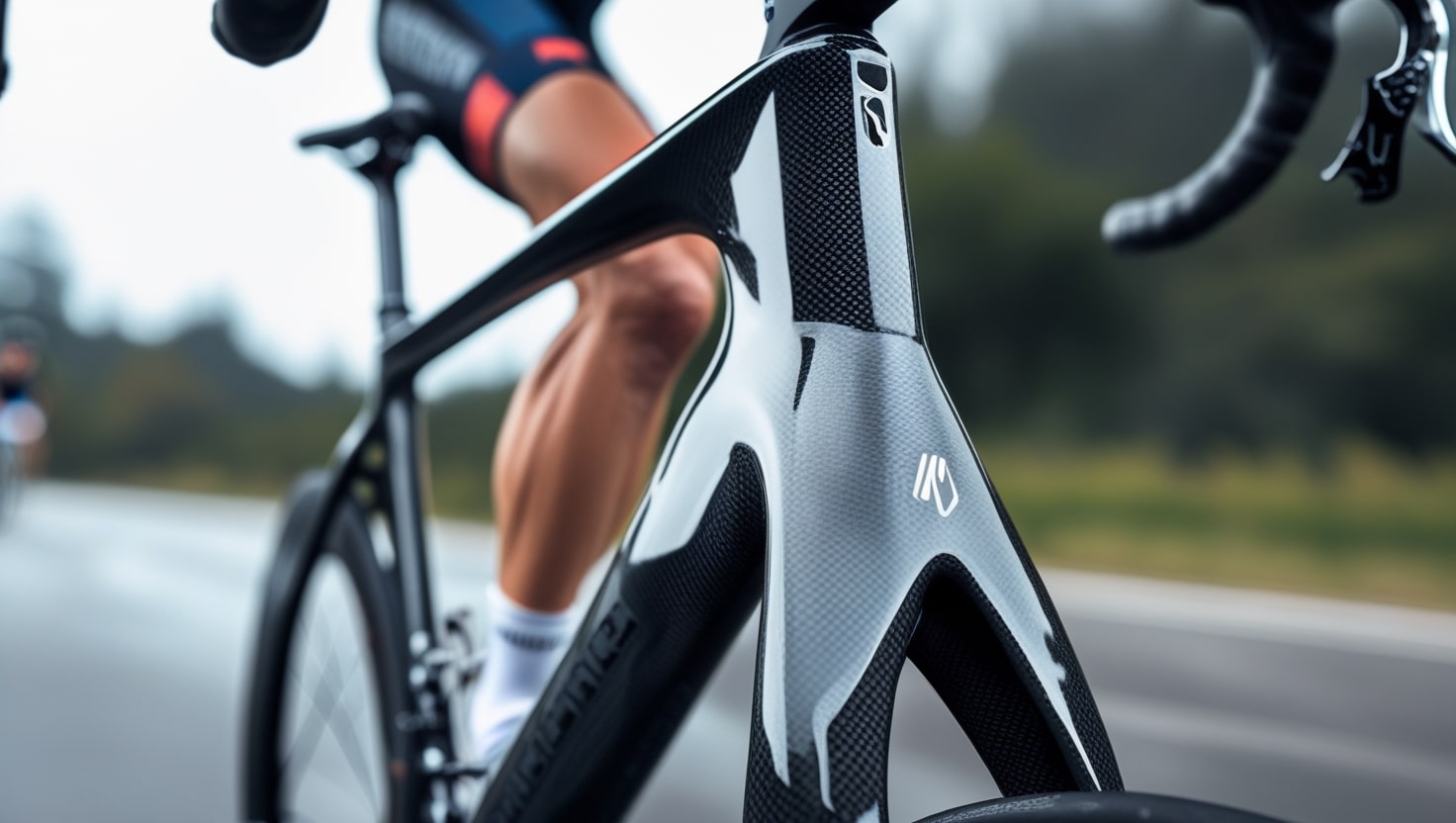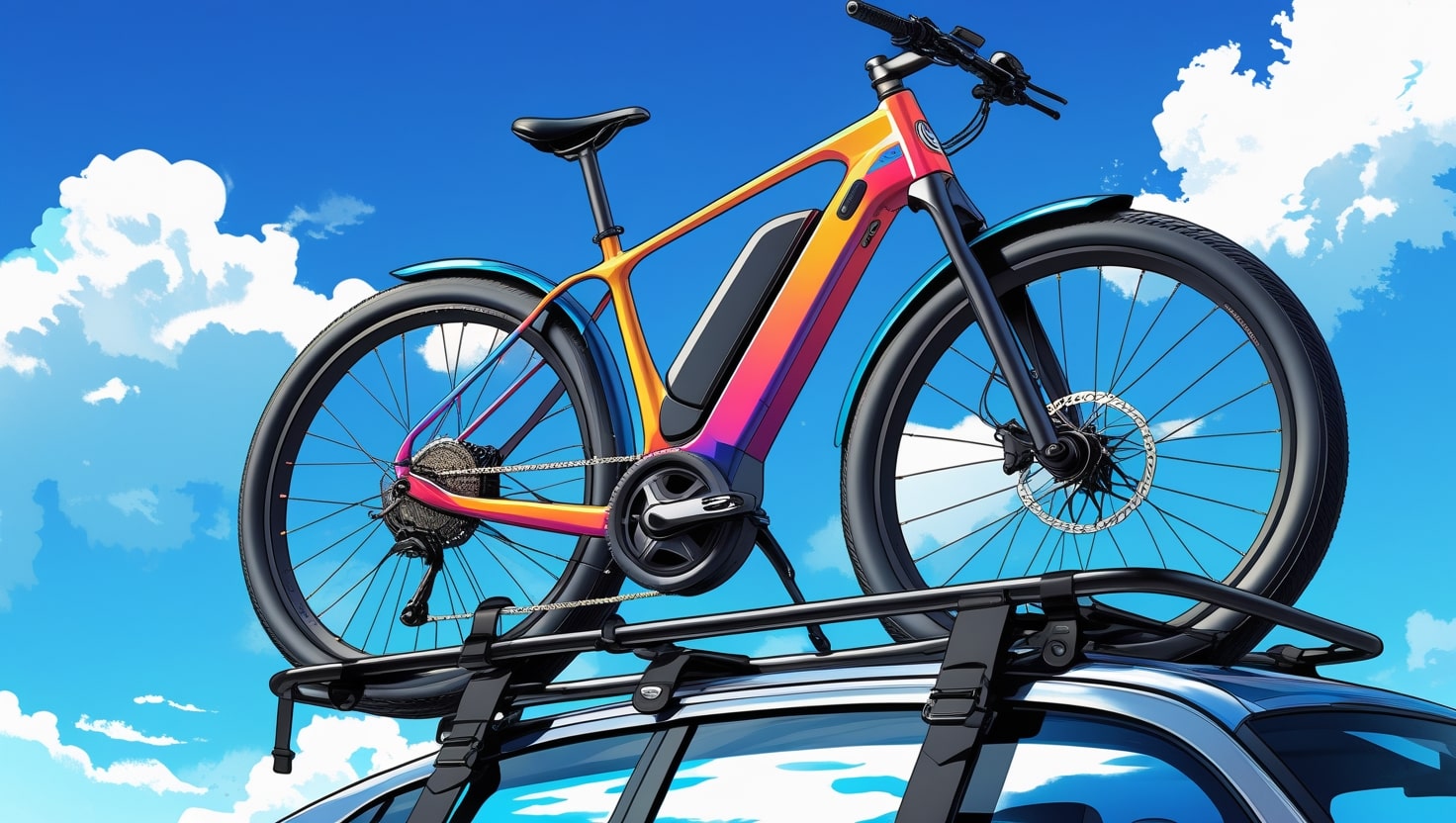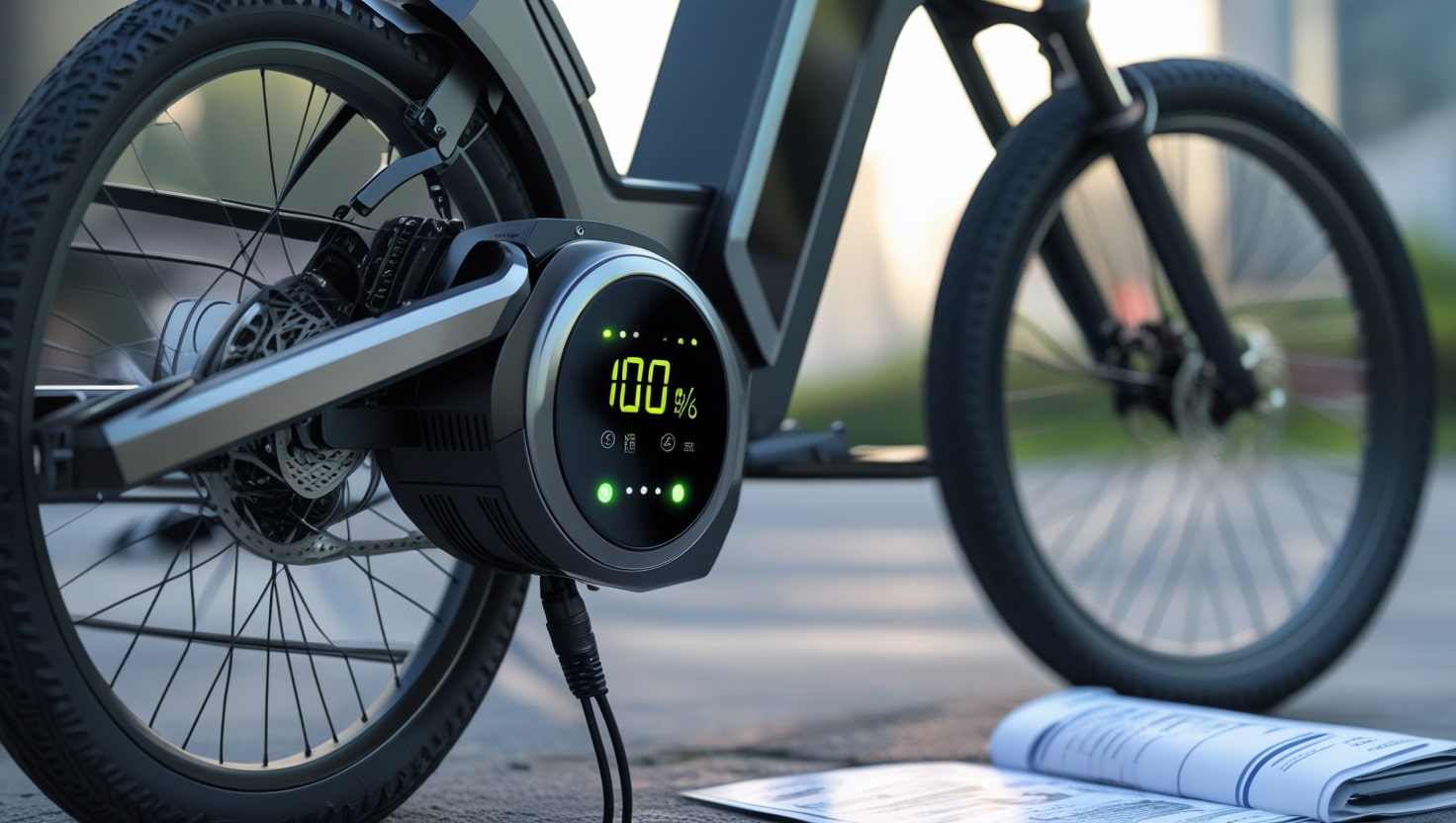When I first got into mountain biking, I never imagined I’d be drawn into the heated debate of electric mountain bike vs regular bike. But like many riders, I found myself weighing the pros and cons, trying to understand the subtle differences between these two types of bikes. Through years of riding different terrains and testing both E-MTBs and regular models, I’ve come to appreciate the unique features and performance each offers.
The momentum of electric biking can be thrilling, especially for steep climbs or long-distance adventures, but there’s something timeless about the feel of a traditional pedal-powered bike. Whether you’re considering an alternative like an E-MTB or sticking with the classics, this article will delve into how each option suits various scenarios, helping you decide which one fits your needs best. It’s all about the comparison and the suitability for your style of biking.
Core Differences: electric mountain bike vs regular bike
Performance Capabilities
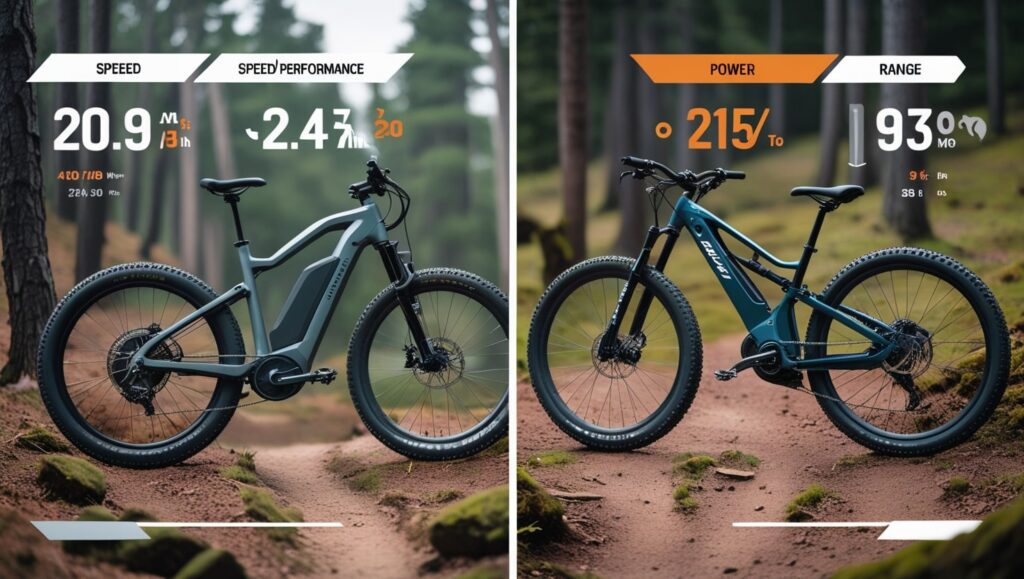
From my own experience on the trails, the difference between E-MTBs and regular bikes becomes clear the moment you hit tough terrain. E-MTBs come with a built-in motor and battery system that delivers a noticeable boost in power, especially when climbing steep hills or trying to traverse long distances. This kind of assistance can really enhance your riding, making it more suitable for those who want to conserve effort or simply go further, faster. I’ve seen how the added capabilities help riders tackle inclines with ease and keep up their speed on longer rides, even when their physical strength starts to wear down.
On the flip side, riding a regular mountain bike relies entirely on your technique, physical drive, and strength. While more demanding, this traditional approach gives you a deeper connection with the bike, letting you fully immerse yourself in the raw challenges of biking. There’s a certain satisfaction in mastering your abilities over rough terrain, using just your body and willpower to push through. For those who like to develop skill and endurance naturally, the traditional route is often more rewarding and feels more personal. Both styles are suitable depending on what you’re looking for in your riding journey.
Range and Battery Life
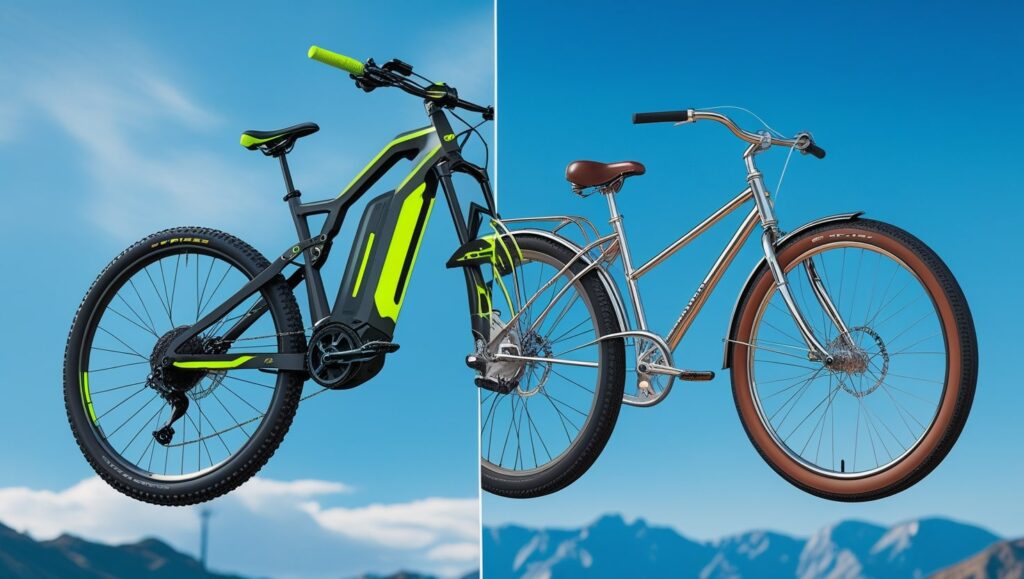
When it comes to range and battery life, the real-world difference between E-MTBs and regular bikes becomes very clear. From my time testing both, I’ve found that e-MTBs rely heavily on a motor to provide extra power, making them great for long-distance travel across uneven terrain. However, this also means you need to carefully plan your route based on how much battery you have left.
The duration of each charge varies by riding style, terrain, and even battery quality. Some models cover impressive kilometers, but to keep performance optimal, the battery must be maintained and charged regularly, and replacing it becomes necessary over time.
By contrast, regular mountain bikes don’t depend on a battery at all. As long as you have the physical energy, you can just pedal and keep going without worrying about power limits. This freedom makes them appealing for riders who enjoy simple, consistent riding without the extra steps of charging or battery care.
Cost and Maintenance
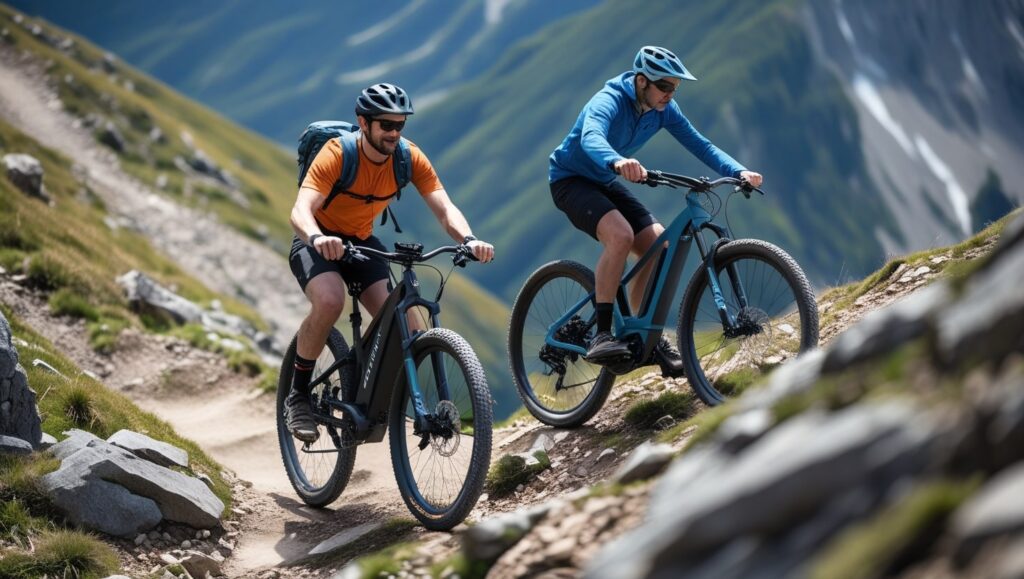
One of the biggest factors I noticed when switching from a regular mountain bike to an E-MTB was the cost. The price of E-MTBs is naturally higher due to the added components, like the battery, motor, and system that make the bike run. This kind of technology isn’t cheap, and riders should also plan for future replacement of parts over time, especially when performance starts to decline.
A typical purchase includes more than just the bike—it includes a commitment to keeping these high-tech systems in good condition. These requirements can be a bit more complex.
With regular bikes, things are far more affordable and manageable. Basic maintenance tasks like lubricating chains, adjusting brakes, and checking tire pressure are easy and don’t involve complicated electrical systems. I personally enjoy doing quick checks before a ride—it keeps the bike in great shape and builds a connection with it. Keeping the bike properly maintained helps avoid unexpected damage and ensures it’s always ready.
Weight: Heavier vs. Lightweight
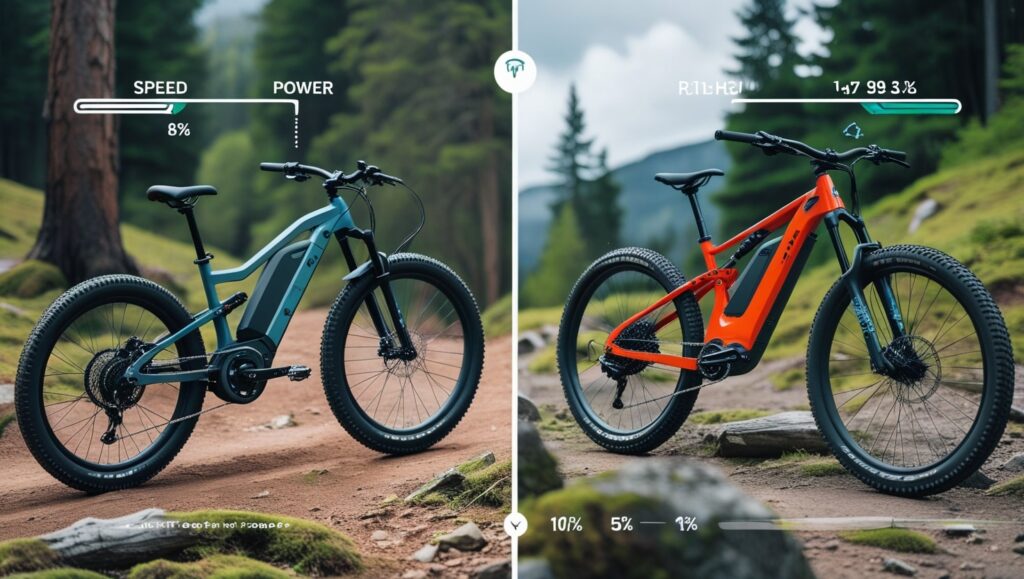
Compared to their conventional or non-electric equivalents, electric mountain bikes are notably heavier. That’s mainly because of the added battery and motor, which boost climbing and speed thanks to built-in assistance.
But from personal experience, that extra bulk can affect maneuverability, especially in technical sections of a trail, where being nimble really matters. The impact is felt most on flats or tight turns, and while the motor helps, it’s still something new riders should prepare for.
On the other hand, lighter bikes are simply easier to lift, carry, and travel with—something I’ve appreciated on trips where I had to haul my bike up stairs or over obstacles. The lightweight design of a regular bike brings out quicker acceleration and sharper handling, especially through technical trails.
Suitability for Different Riders and Riding Styles
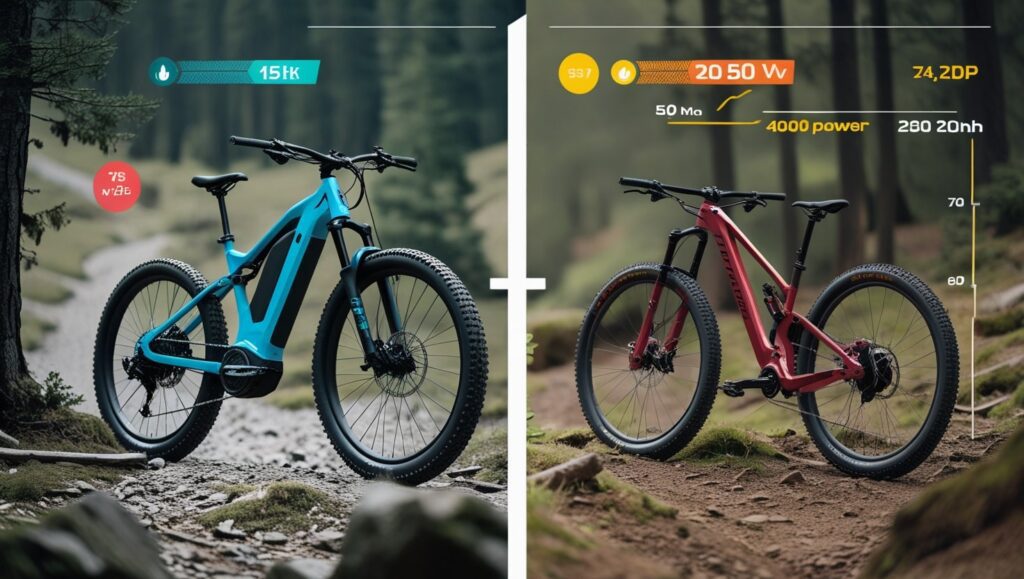
Over the years, I’ve noticed that suitability really comes down to matching the bike to a rider’s preferences and riding style. E-MTBs are often the ideal choice for riders who prioritize convenience and efficiency, especially when navigating tough terrain or lacking the physical endurance for long rides. They’re perfect for those who want to enjoy the scenery and the outdoors with less effort, making them a great fit for recreational biking or exploring trails at a comfortable pace.
In contrast, regular mountain bikes appeal more to those who embrace the challenge and love the feeling of accomplishment that comes from using sheer strength and refined technique. I’ve met many riders who ride purely for the sport, who see biking not just as a workout but as a deeply authentic, traditional pursuit. The intense connection they form with their bikes and trails is rooted in a desire for a pure and raw experience.
Environmental Impact
In recent years, I’ve paid more attention to the environmental impact of the gear I use, especially my bikes. E-MTBs, with their motors, batteries, and use of electricity, tend to leave a larger footprint compared to regular mountain bikes. The disposal and recycling of a used battery is a growing concern, but ongoing development in technology is helping. Newer models are becoming more efficient, and there’s hope for even more sustainable designs in the future.
On the other hand, regular bikes require no fuels or electricity to operate, making them a cleaner choice for eco-conscious riders. They offer an environmentally friendly way to enjoy the outdoors, especially when you add in good practices like using sustainable materials, caring for your gear, and supporting brands focused on low-impact riding. I’ve made small changes—like selecting reusable gear and maintaining my bike longer—to reduce my footprint.
Related: 10 Essential Tools for a Bike Ride
Why Choose a Regular Mountain Bike?
Regular mountain bikes have long been a favorite among riders who want total control over their journey. They are a good fit for your riding needs because of the following:
Full Control & Skill Development: One thing I admire about regular MTBs is the complete absence of motor assistance, which pushes riders to develop true strength, endurance, and technical skills. The pure challenge of mountain biking helps sharpen your riding abilities, making every trail feel like a rewarding test of control. Over time, this allows you to refine your approach and grow as a rider in ways that an electric option might not offer.
Lightweight for Easier Handling: Without motors or batteries, regular bikes are noticeably lighter, making them much easier to maneuver through tight trails, steep descents, and over rough obstacles. Their lightweight feel improves handling, especially when carrying them across uneven terrain or loading them for travel.
More Affordable: For anyone on a budget, a traditional, cost-effective option like a regular MTB makes a lot of sense. With no expense tied to an electric motor or battery, these bikes are more affordable and accessible across all rider levels.
Why Choose an Electric Mountain Bike?
Electric mountain bikes are revolutionizing the riding experience by adding power that prolongs your journey and smoothes uphill climbs. An e-MTB is a fantastic choice for your next adventure for the following reasons:
Conquer Steep Climbs with Ease: One of the biggest advantages of electric bikes is the added power from the motor, which helps riders tackle steep climbs and tough uphill sections without struggling. Instead of exhausting your legs, you can focus on the ride and enjoy the challenge without burnout.
Go the Distance: E-MTBs come with motor assistance that allows you to cover greater distance than a regular bike. Whether you’re out for a long adventure or just want your rides to go a bit further, they’re a real game-changer—especially when you don’t want a short battery life cutting things off too soon.
Less Fatigue, More Fun: With e-bikes, the strain on your legs is reduced, which means less fatigue and more energy left to explore multiple trails. For those who need support with endurance, or want to pack more riding into one day without feeling totally drained, these bikes are incredibly beneficial.
Conclusion
Choosing between E-MTBs and regular mountain bikes really comes down to what the rider values most. If your needs include convenience, efficiency, and better climbing ability, then E-MTBs are likely the more suitable choice, especially for those who prefer a smoother riding experience. On the flip side, if you’re someone who enjoys a traditional, more challenging ride and seeks a deeper connection with your bike, then a regular MTB aligns better with your preferences and style.

